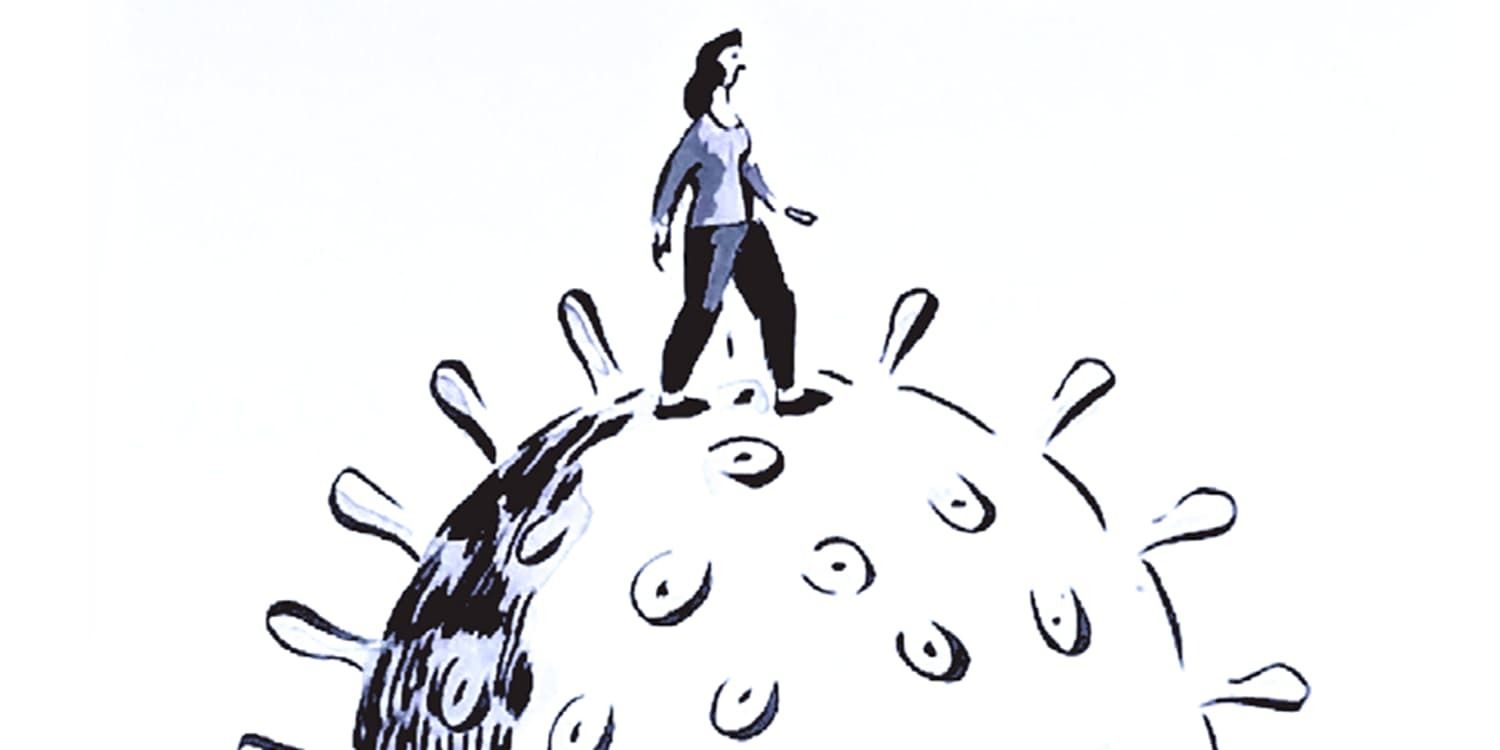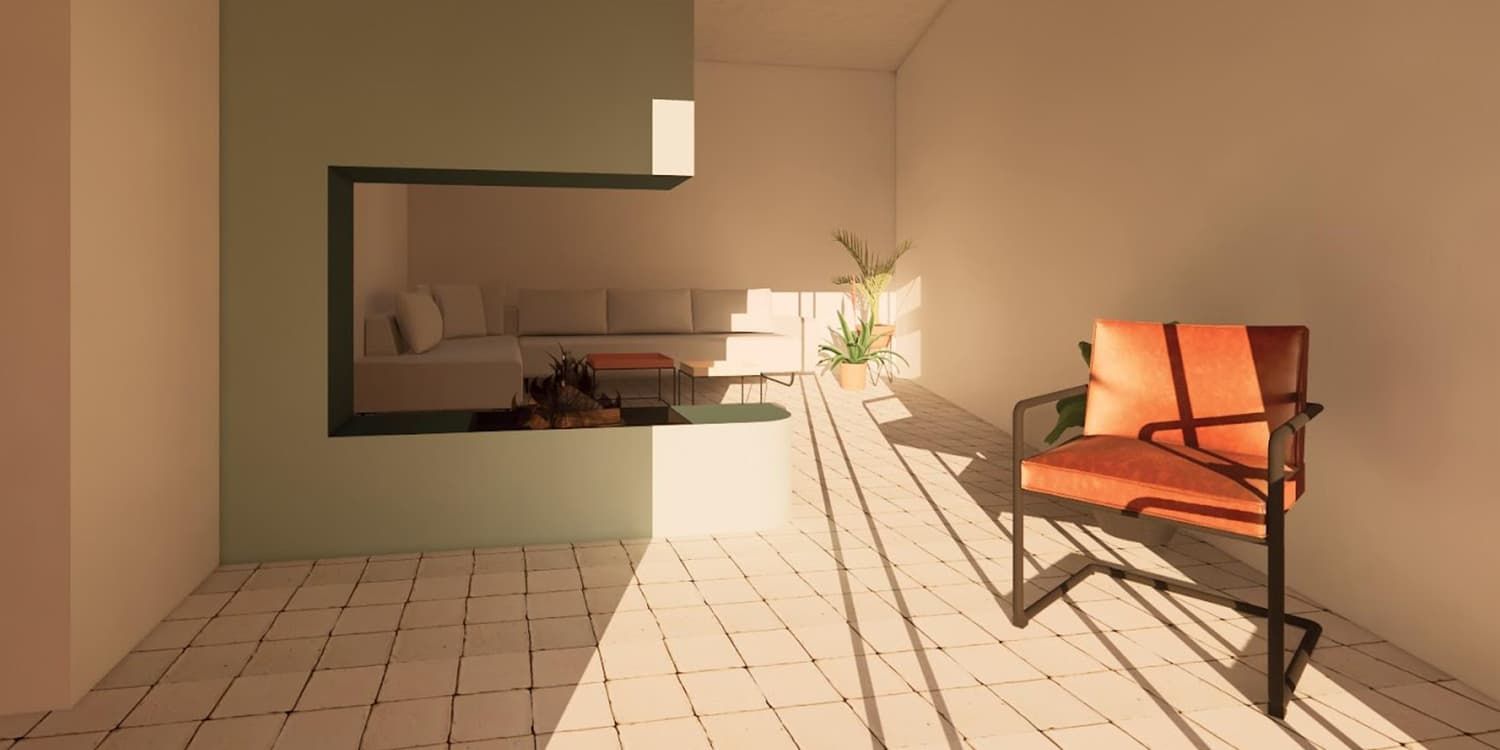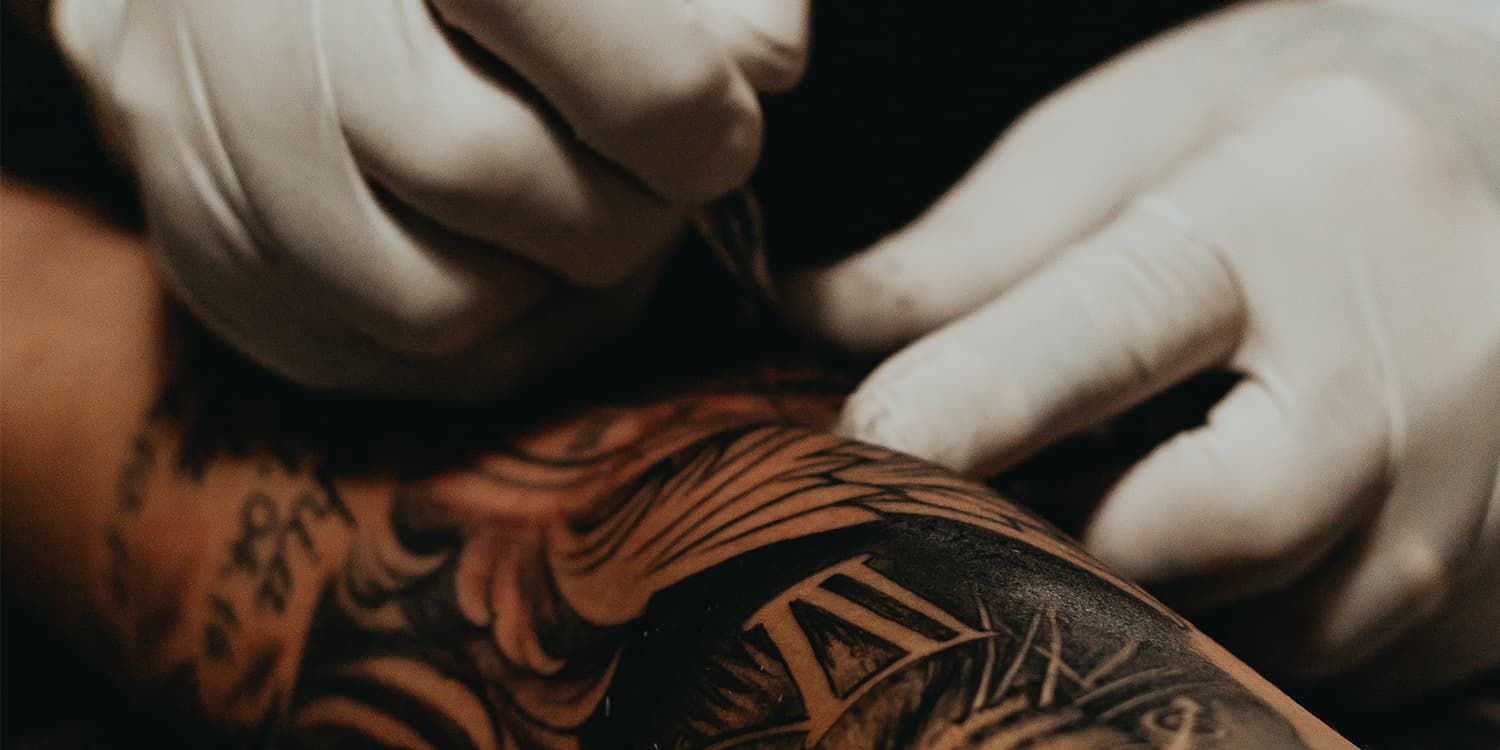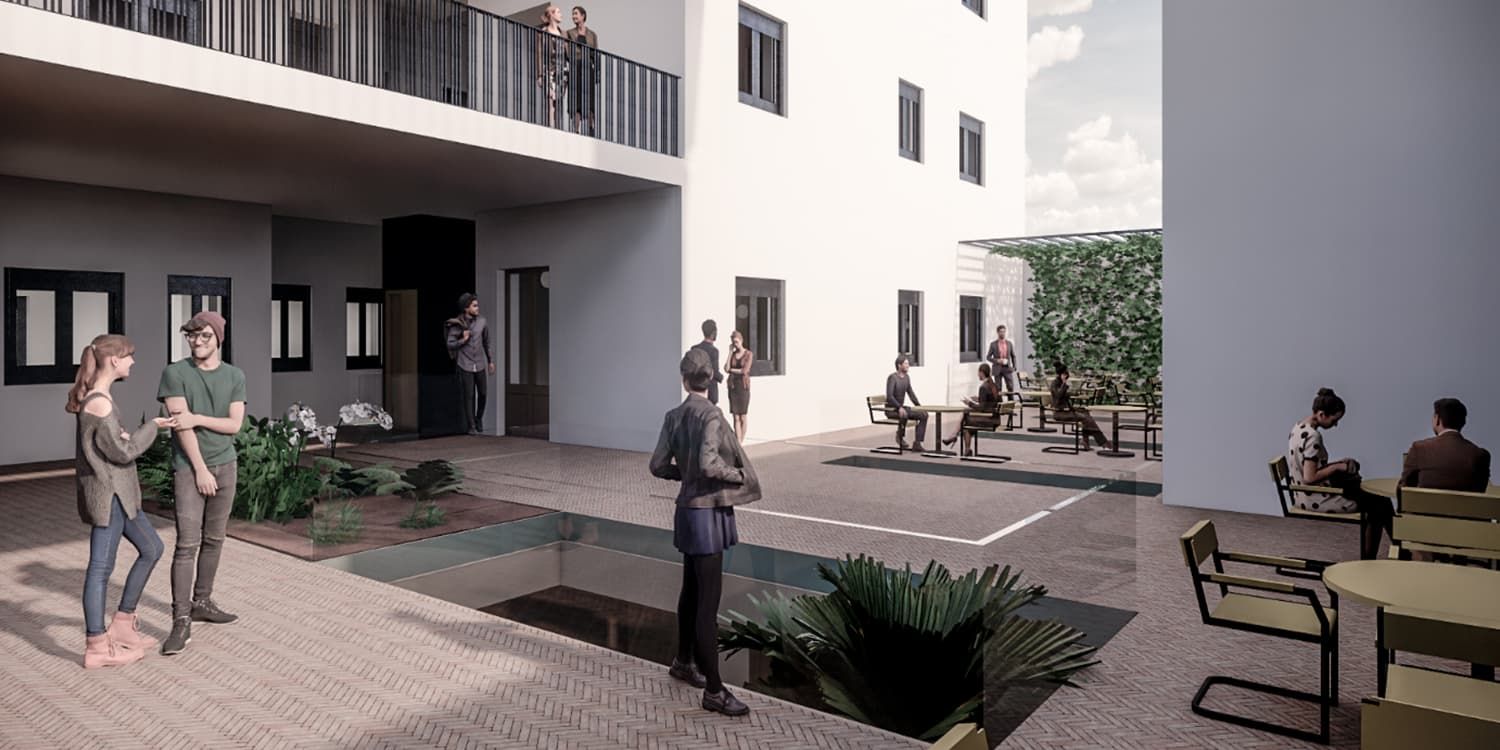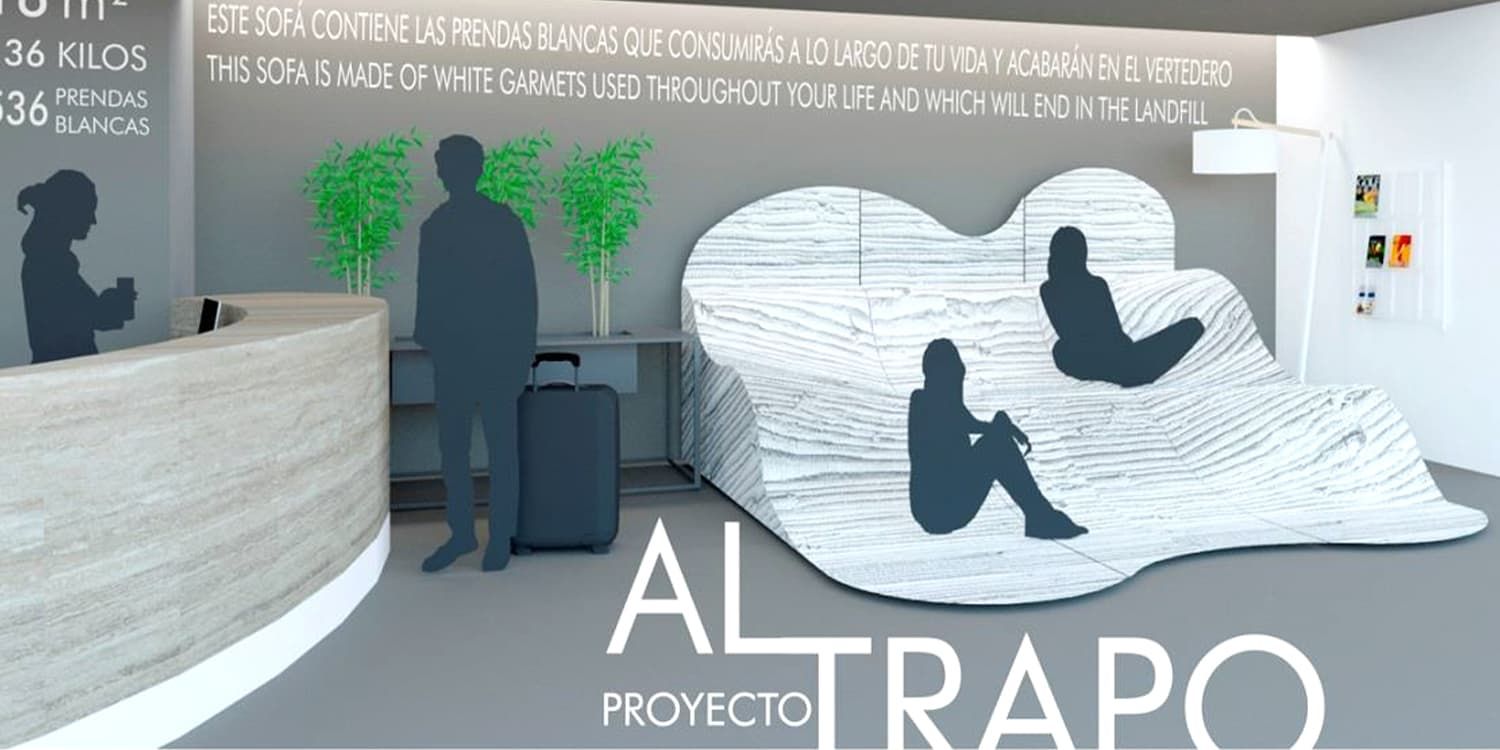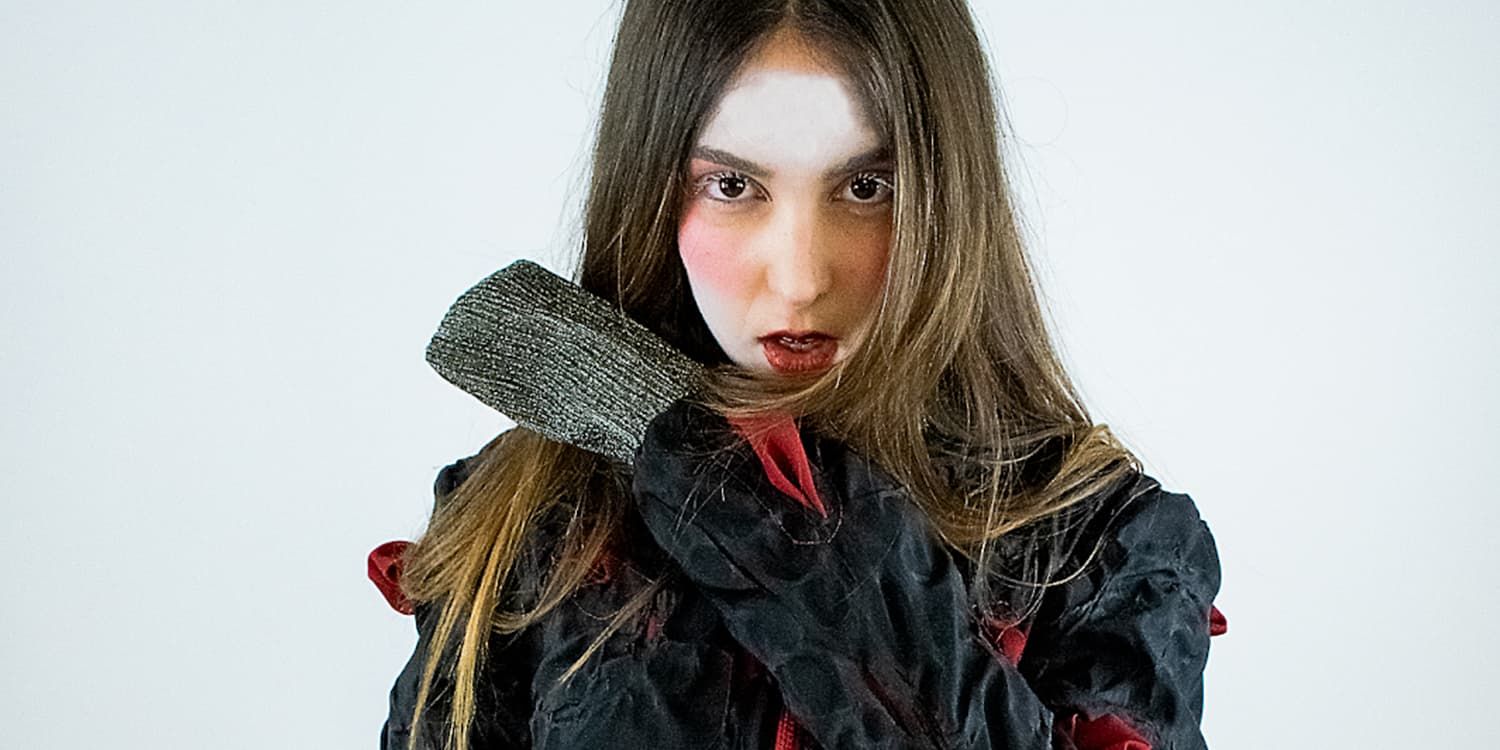- Subtítulo: Propuesta de reutilización del plástico de los invernaderos almerienses. Colección Agricostura
- Autor: Elena Funes Suárez
- Abstract:
Agricostura is a collection of women’s Haute Couture fashion which, through the artistic support that fashion itself produces, aims to tell the story that has happened in the Almeria countryside.
Agricostura intends to give greater scope to this story, in a way that has not been done before.
Going through its three main phases, designs will be produced that speak of the past, present and possible future of the fruit and vegetable sector. The collection is inspired by science, progress, culture and sustainability.
As a result, a fashion collection of a total of thirty women’s designs has been created which, incorporating the materials typical of the Almeria countryside with those intrinsic to the world of fashion, evoke values of craftsmanship, tradition, know-how and respect for the environment.
- Número revista: 1 - 2022
- DOI: 10.58534/2SVKNhlBBh-1-5
- citation_title: Diseño de moda y sostenibilidad
- citation_publication_date: 2022/12/8
- citation_online_date: 2022/12/8
- citation_pdf_url: investigacion/concept/concept_1_ddmys.pdf
- citation_journal_title: Concept
- citation_volume: 1
- citation_issue: 1
- citation_issn: 2952-1440
- citation_dissertation_institution: ESADA - Escuela Superior de Arte y Diseño de Andalucía
- citation_technical_report_institution: ESADA - Escuela Superior de Arte y Diseño de Andalucía
- citation_technical_report_number: 10.58534/2SVKNhlBBh-1-5
- citation_keywords: alta costura, sostenibilidad, agricultura, culturalidad, progreso
- citation_abstract_html_url: https://www.esada.es/investigacion/revista-concept/42-investigacion/586-diseno-de-moda-y-sostenibilidad
concept_1
- Subtítulo: Análisis comparativo entre memes y viñetas cómicas. Caso: pandemia Covid-19 en España, 2020
- Autor: Patricia Prieto Arroyo
- Abstract:
This study aims to analyse the graphic language of cartoons in times of crisis. Specifically, we will look at the cartoons created by El Roto and published by the newspaper El País during the days of confinement due to the Covid-19 pandemic. To this end, the methodology of content analysis has been applied using a quantitative approach. It is concluded from the results obtained that all the hypotheses put forward are fulfilled, except the last one.
- Número revista: 1 - 2022
- DOI: 10.58534/2SVKNhlBBh-1-4
- citation_title: Diseño gráfico y humor en tiempos de crisis
- citation_publication_date: 2022/12/8
- citation_online_date: 2022/12/8
- citation_pdf_url: investigacion/concept/concept_1_dgyhetdc.pdf
- citation_journal_title: Concept
- citation_volume: 1
- citation_issue: 1
- citation_issn: 2952-1440
- citation_dissertation_institution: ESADA - Escuela Superior de Arte y Diseño de Andalucía
- citation_technical_report_institution: ESADA - Escuela Superior de Arte y Diseño de Andalucía
- citation_technical_report_number: 10.58534/2SVKNhlBBh-1-4
- citation_keywords: humor gráfico, viñeta, meme, pandemia, covid-19
- citation_abstract_html_url: https://www.esada.es/investigacion/revista-concept/42-investigacion/587-diseno-grafico-y-humor-en-tiempos-de-crisis
- Subtítulo: Rehabilitación de una vivienda en la vega de Granada. Los estratos del hábitat
- Autor: Gema Barranco Martín
- Abstract:
The Vega of Granada has been linked to the city for as long as it has been known. The fact that the first settlements existed in Granada is due to its location, protected by the mountains and with a large plain of fertile land that has favoured the livelihood and economy of the region.
The traditional constructions of the Vega de Granada have a typology of load-bearing walls and very divided rooms that generate a certain rigidity in terms of the use given to the spaces.
What has been proposed from the initial design is to simplify the distribution of the house trying to add as few vertical divisions as possible and bringing together all the facilities and equipment in a central service strip that serves and communicates the whole house. This service band has originated from the design of the furniture. The use of each of the modules is what generates the spaces, this being the main element of the project.
In turn, a permeable dwelling has been designed with multifunctional spaces that can adapt to changes in the client’s lifestyle over time. The communication between the interior and exterior spaces is direct, understanding the courtyard-garden as habitable rooms.
Thus, a project has been developed that manages to unite the original house with the additions it had, making the interior and exterior generate a symbiosis typical of the traditional habitat of the Vega of Granada, adapted to contemporary forms and rhythms of life.
- Número revista: 1 - 2022
- DOI: 10.58534/2SVKNhlBBh-1-3
- citation_title: Diseño de interiores e identidad cultural
- citation_publication_date: 2022/12/8
- citation_online_date: 2022/12/8
- citation_pdf_url: investigacion/concept/concept_1_ddieic.pdf
- citation_journal_title: Concept
- citation_volume: 1
- citation_issue: 1
- citation_issn: 2952-1440
- citation_dissertation_institution: ESADA - Escuela Superior de Arte y Diseño de Andalucía
- citation_technical_report_institution: ESADA - Escuela Superior de Arte y Diseño de Andalucía
- citation_technical_report_number: 10.58534/2SVKNhlBBh-1-3
- citation_keywords: diseño de interiores, rehabilitación, identidad cultural, vega de granada
- citation_abstract_html_url: https://www.esada.es/investigacion/revista-concept/42-investigacion/588-diseno-de-interiores-e-identidad-cultural
- Subtítulo: Análisis de los tatuajes tras la pandemia del Covid-19. Caso: Granada, 2020
- Autor: José María Ripoll Ruiz
- Abstract:
The world of tattooing is expanding and becoming more and more integrated into our society. The aim of this study is to determine the themes and styles of tattoo users in the wake of the Covid 19 pandemic. Specifically, the technique of content analysis will be used, together with the use of the quantitative approach. These will be applied to a sample of the most relevant tattoo artists in Granada and their works by means of an analysis sheet. In this way, we will be able to observe the influence of a period of crisis when it comes to making a body modification, such as tattooing, and how this can help in the face of such a traumatic situation, as a means of escape.
- Número revista: 1 - 2022
- DOI: 10.58534/2SVKNhlBBh-1-2
- citation_title: El diseño gráfico en tiempos de crisis
- citation_publication_date: 2022/12/8
- citation_online_date: 2022/12/8
- citation_pdf_url: investigacion/concept/concept_1_edgetdc.pdf
- citation_journal_title: Concept
- citation_volume: 1
- citation_issue: 1
- citation_issn: 2952-1440
- citation_dissertation_institution: ESADA - Escuela Superior de Arte y Diseño de Andalucía
- citation_technical_report_institution: ESADA - Escuela Superior de Arte y Diseño de Andalucía
- citation_technical_report_number: 10.58534/2SVKNhlBBh-1-2
- citation_keywords: tatuaje, antecedentes, técnicas, evasión, piel, trasfondo
- citation_abstract_html_url: https://www.esada.es/investigacion/revista-concept/42-investigacion/589-el-diseno-grafico-en-tiempos-de-crisis
- Subtítulo: Aplicación de la retícula en la distribución de espacios interiores. Caso: La Compañía Granadina
- Autor: Virginia Fajardo Ortiz
- Abstract:
This project arises from the interest in interior design in the recovery of historic buildings that are in disuse and generally in precarious conditions, and develops the proposal for the refurbishment of the Building of the Compañía Granadina de Industria y Comercio.
The building, designed by Fernando Wilhelmi Manzano in 1934, is considered a reference of Modern Movement architecture in the city of Granada and is listed as a building belonging to the Andalusian Historical Heritage. Therefore, in order to approach the project in an appropriate manner, the necessary research was carried out to find out about those aspects that help to understand the conformation of the building, the concepts on the basis of which it was designed and its operation.
This research, carried out extensively starting from the building itself to the origins of the concepts of the Modern Movement, results in the analysis of the use of the grid as an element that organises the structure of the architectural complex and from which the spaces are generated.
The design proposal develops the project for the refurbishment of the building by applying the conceptualisation of the grid as the basis of the building’s identity, giving value to those elements that give it its character, without prejudice to the conditions of functionality currently required, and whose final objective is the profitability of the heritage by the owner.
- Número revista: 1 - 2022
- DOI: 10.58534/2SVKNhlBBh-1-1
- citation_title: Diseño y rehabilitación de edificios
- citation_publication_date: 2022/12/8
- citation_online_date: 2022/12/8
- citation_pdf_url: investigacion/concept/concept_1_dyrde.pdf
- citation_journal_title: Concept
- citation_volume: 1
- citation_issue: 1
- citation_issn: 2952-1440
- citation_dissertation_institution: ESADA - Escuela Superior de Arte y Diseño de Andalucía
- citation_technical_report_institution: ESADA - Escuela Superior de Arte y Diseño de Andalucía
- citation_technical_report_number: 10.58534/2SVKNhlBBh-1-1
- citation_keywords: diseño de interiores, la compañía granadina, movimiento moderno, wilhelmi manzano, rehabilitación de edificios, retícula
- citation_abstract_html_url: https://www.esada.es/investigacion/revista-concept/42-investigacion/590-diseno-y-rehabilitacion-de-edificios
- Subtítulo: Propuesta de reuso textil. Al trapo
- Autor: Marina Quesada García
- Abstract:
In the society in which the reproduction of waste is lived today is an increasingly significant complication because of the characteristics and thickness of their creation. The policies developed in the framework of waste created in the most industrialized countries have been forced to evolve as scientific knowledge and citizen awareness regarding environmental issues progress. The current predisposition towards sustainable waste management has as preferences, the reduction of waste reproduction, reuse, recovery through recycling and, finally, dumping. Textile waste is a significant part of urban solid waste, the increase in textile spending is the most consumed in Spain.
This project involves research into the situation of the second most polluting waste on the planet with a worrying future. Chosen the theme, this responds to the need in search of the design and development of the solution to the problem with possible applications in functional home furniture, practical and extraordinarily unique applying the most current and attractive trends possible for the user.
Throughout the project has been present our main objective, the need to preserve our planet through our solutions.
With the realization of this project, we have sought experimentation, to escape from conventionalism, the involvement of enthusiasm and knowledge of artisans, designers as well as public and private organizations that have been present to highlight and promote this somewhat unknown situation and with this join forces and synergies leading to a hard reflection.
- Número revista: 1 - 2022
- DOI: 10.58534/2SVKNhlBBh-1-7
- citation_title: Diseño de producto y sostenibilidad
- citation_publication_date: 2022/12/8
- citation_online_date: 2022/12/8
- citation_pdf_url: investigacion/concept/concept_1_ddpys.pdf
- citation_journal_title: Concept
- citation_volume: 1
- citation_issue: 1
- citation_issn: 2952-1440
- citation_dissertation_institution: ESADA - Escuela Superior de Arte y Diseño de Andalucía
- citation_technical_report_institution: ESADA - Escuela Superior de Arte y Diseño de Andalucía
- citation_technical_report_number: 10.58534/2SVKNhlBBh-1-7
- citation_keywords: diseño de producto, sostenibilidad, reciclaje, reutilización textil
- citation_abstract_html_url: https://www.esada.es/investigacion/revista-concept/42-investigacion/591-diseno-de-producto-y-sostenibilidad
- Subtítulo: Aplicación de la técnica del quemado en la manipulación textil. Colección skinnor
- Autor: Matejka De Rocco
- Abstract:
SKINNOR is a collection of gender-fluid garments and accessories designed for autumn/winter 2023. Volumes, textile manipulation, geometry and tailoring are valued, and skirts, bulky shapes, lines are protagonists. geometric shapes and strong contrasts. The fabrics are deconstructed and reconstructed so as not only to fulfill the function of being part of a garment, but to elevate its purpose on a practical and psychological level.The burning technique has made it easier for us to transmit sensations that cause amazement, admiration and curiosity.
Purpose and function merge, garments are not just an object that shelters, they are works of art that express emotions and must be passed down from generation to generation. Designers who have been inspired are Balenciaga, Johji Yamamoto, Issey Miyake, John Galliano, Martin Margiela and Rei Kawakubo. Lucio Fontana and spatialism have been essential for the development of the concept. The canvases, through cuts and overexposure, go from being flat to three-dimensional, gaining depth and a unique chromatic effect. Each garment and each accessory is handmade in the Slow Fashion concept, generating haute couture that takes advantage of destroyed, torn and burned fabrics. Skinnor addresses a public that understands, thinks, feels and values fashion as an art form and not as a commercial source.
- Número revista: 1 - 2022
- DOI: 10.58534/2SVKNhlBBh-1-6
- citation_title: Slow Fashion y arte
- citation_publication_date: 2022/12/8
- citation_online_date: 2022/12/8
- citation_pdf_url: investigacion/concept/concept_1_sfya.pdf
- citation_journal_title: Concept
- citation_volume: 1
- citation_issue: 1
- citation_issn: 2952-1440
- citation_dissertation_institution: ESADA - Escuela Superior de Arte y Diseño de Andalucía
- citation_technical_report_institution: ESADA - Escuela Superior de Arte y Diseño de Andalucía
- citation_technical_report_number: 10.58534/2SVKNhlBBh-1-6
- citation_keywords: manipulación textil, tridimensionalidad, deconstrucción, espacialismo, slow fashion, técnica de quemado
- citation_abstract_html_url: https://www.esada.es/investigacion/revista-concept/42-investigacion/592-slow-fashion-y-arte
- Subtítulo: Application of the grid in the distribution of interior spaces. Case: La Compañía Granadina
- Autor: Virginia Fajardo Ortiz
- Abstract:
This project arises from the interest in interior design in the recovery of historic buildings that are in disuse and generally in precarious conditions, and develops the proposal for the refurbishment of the Building of the Compañía Granadina de Industria y Comercio.
The building, designed by Fernando Wilhelmi Manzano in 1934, is considered a reference of Modern Movement architecture in the city of Granada and is listed as a building belonging to the Andalusian Historical Heritage. Therefore, in order to approach the project in an appropriate manner, the necessary research was carried out to find out about those aspects that help to understand the conformation of the building, the concepts on the basis of which it was designed and its operation.
This research, carried out extensively starting from the building itself to the origins of the concepts of the Modern Movement, results in the analysis of the use of the grid as an element that organises the structure of the architectural complex and from which the spaces are generated.
The design proposal develops the project for the refurbishment of the building by applying the conceptualisation of the grid as the basis of the building’s identity, giving value to those elements that give it its character, without prejudice to the conditions of functionality currently required, and whose final objective is the profitability of the heritage by the owner.
- Número revista: 1 - 2022
- DOI: 10.58534/2SVKNhlBBh-1-1
- citation_title: Building design and refurbishment
- citation_publication_date: 2022/12/8
- citation_online_date: 2022/12/8
- citation_pdf_url: investigacion/concept/concept_1_dyrde.pdf
- citation_journal_title: Concept
- citation_volume: 1
- citation_issue: 1
- citation_issn: 2952-1440
- citation_dissertation_institution: ESADA - Escuela Superior de Arte y Diseño de Andalucía
- citation_technical_report_institution: ESADA - Escuela Superior de Arte y Diseño de Andalucía
- citation_technical_report_number: 10.58534/2SVKNhlBBh-1-1
- citation_keywords: interior design, la compañía granadina, modern movement, wilhelmi manzano, building rehabilitation, reticle
- citation_abstract_html_url: https://www.esada.es/en/research/concept-magazine/45-research/625-building-design-and-refurbishment
- Subtítulo: Analysis of tattoos after the Covid-19 pandemic. Case: Grenada, 2020
- Autor: José María Ripoll Ruiz
- Abstract:
The world of tattooing is expanding and becoming more and more integrated into our society. The aim of this study is to determine the themes and styles of tattoo users in the wake of the Covid 19 pandemic. Specifically, the technique of content analysis will be used, together with the use of the quantitative approach. These will be applied to a sample of the most relevant tattoo artists in Granada and their works by means of an analysis sheet. In this way, we will be able to observe the influence of a period of crisis when it comes to making a body modification, such as tattooing, and how this can help in the face of such a traumatic situation, as a means of escape.
- Número revista: 1 - 2022
- DOI: 10.58534/2SVKNhlBBh-1-2
- citation_title: Graphic design in times of crisis
- citation_publication_date: 2022/12/8
- citation_online_date: 2022/12/8
- citation_pdf_url: investigacion/concept/concept_1_edgetdc.pdf
- citation_journal_title: Concept
- citation_volume: 1
- citation_issue: 1
- citation_issn: 2952-1440
- citation_dissertation_institution: ESADA - Escuela Superior de Arte y Diseño de Andalucía
- citation_technical_report_institution: ESADA - Escuela Superior de Arte y Diseño de Andalucía
- citation_technical_report_number: 10.58534/2SVKNhlBBh-1-2
- citation_keywords: tattooing, background, techniques, evasion, skin, theme
- citation_abstract_html_url: https://www.esada.es/en/research/concept-magazine/45-research/626-graphic-design-in-times-of-crisis
- Subtítulo: Rehabilitation of a house in the fertile plain of Granada. The habitat strata
- Autor: Gema Barranco Martín
- Abstract:
The Vega of Granada has been linked to the city for as long as it has been known. The fact that the first settlements existed in Granada is due to its location, protected by the mountains and with a large plain of fertile land that has favoured the livelihood and economy of the region.
The traditional constructions of the Vega de Granada have a typology of load-bearing walls and very divided rooms that generate a certain rigidity in terms of the use given to the spaces.
What has been proposed from the initial design is to simplify the distribution of the house trying to add as few vertical divisions as possible and bringing together all the facilities and equipment in a central service strip that serves and communicates the whole house. This service band has originated from the design of the furniture. The use of each of the modules is what generates the spaces, this being the main element of the project.
In turn, a permeable dwelling has been designed with multifunctional spaces that can adapt to changes in the client’s lifestyle over time. The communication between the interior and exterior spaces is direct, understanding the courtyard-garden as habitable rooms.
Thus, a project has been developed that manages to unite the original house with the additions it had, making the interior and exterior generate a symbiosis typical of the traditional habitat of the Vega of Granada, adapted to contemporary forms and rhythms of life.
- Número revista: 1 - 2022
- DOI: 10.58534/2SVKNhlBBh-1-3
- citation_title: Interior design and cultural identity
- citation_publication_date: 2022/12/8
- citation_online_date: 2022/12/8
- citation_pdf_url: investigacion/concept/concept_1_ddieic.pdf
- citation_journal_title: Concept
- citation_volume: 1
- citation_issue: 1
- citation_issn: 2952-1440
- citation_dissertation_institution: ESADA - Escuela Superior de Arte y Diseño de Andalucía
- citation_technical_report_institution: ESADA - Escuela Superior de Arte y Diseño de Andalucía
- citation_technical_report_number: 10.58534/2SVKNhlBBh-1-3
- citation_keywords: interior design, rehabilitation, cultural identity, vega of Granada
- citation_abstract_html_url: https://www.esada.es/en/research/concept-magazine/45-research/627-interior-design-and-cultural-identity
- Subtítulo: Comparative analysis between memes and cartoons. Case: Covid-19 pandemic in Spain, 2020
- Autor: Patricia Prieto Arroyo
- Abstract:
This study aims to analyse the graphic language of cartoons in times of crisis. Specifically, we will look at the cartoons created by El Roto and published by the newspaper El País during the days of confinement due to the Covid-19 pandemic. To this end, the methodology of content analysis has been applied using a quantitative approach. It is concluded from the results obtained that all the hypotheses put forward are fulfilled, except the last one.
- Número revista: 1 - 2022
- DOI: 10.58534/2SVKNhlBBh-1-4
- citation_title: Graphic design and humour in times of crisis
- citation_publication_date: 2022/12/8
- citation_online_date: 2022/12/8
- citation_pdf_url: investigacion/concept/concept_1_dgyhetdc.pdf
- citation_journal_title: Concept
- citation_volume: 1
- citation_issue: 1
- citation_issn: 2952-1440
- citation_dissertation_institution: ESADA - Escuela Superior de Arte y Diseño de Andalucía
- citation_technical_report_institution: ESADA - Escuela Superior de Arte y Diseño de Andalucía
- citation_technical_report_number: 10.58534/2SVKNhlBBh-1-4
- citation_keywords: graphic humour, cartoon, meme, pandemic, covid-19
- citation_abstract_html_url: https://www.esada.es/en/research/concept-magazine/45-research/628-graphic-design-and-humour-in-times-of-crisis
- Subtítulo: Proposal for the reuse of plastic from Almeria's greenhouses. Agricostura Collection
- Autor: Elena Funes Suárez
- Abstract:
Agricostura is a collection of women’s Haute Couture fashion which, through the artistic support that fashion itself produces, aims to tell the story that has happened in the Almeria countryside.
Agricostura intends to give greater scope to this story, in a way that has not been done before.
Going through its three main phases, designs will be produced that speak of the past, present and possible future of the fruit and vegetable sector. The collection is inspired by science, progress, culture and sustainability.
As a result, a fashion collection of a total of thirty women’s designs has been created which, incorporating the materials typical of the Almeria countryside with those intrinsic to the world of fashion, evoke values of craftsmanship, tradition, know-how and respect for the environment.
- Número revista: 1 - 2022
- DOI: 10.58534/2SVKNhlBBh-1-5
- citation_title: Fashion design and sustainability
- citation_publication_date: 2022/12/8
- citation_online_date: 2022/12/8
- citation_pdf_url: investigacion/concept/concept_1_ddmys.pdf
- citation_journal_title: Concept
- citation_volume: 1
- citation_issue: 1
- citation_issn: 2952-1440
- citation_dissertation_institution: ESADA - Escuela Superior de Arte y Diseño de Andalucía
- citation_technical_report_institution: ESADA - Escuela Superior de Arte y Diseño de Andalucía
- citation_technical_report_number: 10.58534/2SVKNhlBBh-1-5
- citation_keywords: haute couture, sustainability, agriculture, culturality, progress
- citation_abstract_html_url: https://www.esada.es/en/research/concept-magazine/45-research/629-fashion-design-and-sustainability
- Subtítulo: Application of the burning technique in textile handling. Skinnor collection
- Autor: Matejka De Rocco
- Abstract:
SKINNOR is a collection of gender-fluid garments and accessories designed for autumn/winter 2023. Volumes, textile manipulation, geometry and tailoring are valued, and skirts, bulky shapes, lines are protagonists. geometric shapes and strong contrasts. The fabrics are deconstructed and reconstructed so as not only to fulfill the function of being part of a garment, but to elevate its purpose on a practical and psychological level.The burning technique has made it easier for us to transmit sensations that cause amazement, admiration and curiosity.
Purpose and function merge, garments are not just an object that shelters, they are works of art that express emotions and must be passed down from generation to generation. Designers who have been inspired are Balenciaga, Johji Yamamoto, Issey Miyake, John Galliano, Martin Margiela and Rei Kawakubo. Lucio Fontana and spatialism have been essential for the development of the concept. The canvases, through cuts and overexposure, go from being flat to three-dimensional, gaining depth and a unique chromatic effect. Each garment and each accessory is handmade in the Slow Fashion concept, generating haute couture that takes advantage of destroyed, torn and burned fabrics. Skinnor addresses a public that understands, thinks, feels and values fashion as an art form and not as a commercial source.
- Número revista: 1 - 2022
- DOI: 10.58534/2SVKNhlBBh-1-6
- citation_title: Slow Fashion and art
- citation_publication_date: 2022/12/8
- citation_online_date: 2022/12/8
- citation_pdf_url: investigacion/concept/concept_1_sfya.pdf
- citation_journal_title: Concept
- citation_volume: 1
- citation_issue: 1
- citation_issn: 2952-1440
- citation_dissertation_institution: ESADA - Escuela Superior de Arte y Diseño de Andalucía
- citation_technical_report_institution: ESADA - Escuela Superior de Arte y Diseño de Andalucía
- citation_technical_report_number: 10.58534/2SVKNhlBBh-1-6
- citation_keywords: textile manipulation, three dimensionality, deconstruction, spatialism, slow fashion, burning technique
- citation_abstract_html_url: https://www.esada.es/en/research/concept-magazine/45-research/630-slow-fashion-and-art
- Subtítulo: Proposal for textile reuse. To the rag
- Autor: Marina Quesada García
- Abstract:
In the society in which the reproduction of waste is lived today is an increasingly significant complication because of the characteristics and thickness of their creation. The policies developed in the framework of waste created in the most industrialized countries have been forced to evolve as scientific knowledge and citizen awareness regarding environmental issues progress. The current predisposition towards sustainable waste management has as preferences, the reduction of waste reproduction, reuse, recovery through recycling and, finally, dumping. Textile waste is a significant part of urban solid waste, the increase in textile spending is the most consumed in Spain.
This project involves research into the situation of the second most polluting waste on the planet with a worrying future. Chosen the theme, this responds to the need in search of the design and development of the solution to the problem with possible applications in functional home furniture, practical and extraordinarily unique applying the most current and attractive trends possible for the user.
Throughout the project has been present our main objective, the need to preserve our planet through our solutions.
With the realization of this project, we have sought experimentation, to escape from conventionalism, the involvement of enthusiasm and knowledge of artisans, designers as well as public and private organizations that have been present to highlight and promote this somewhat unknown situation and with this join forces and synergies leading to a hard reflection.
- Número revista: 1 - 2022
- DOI: 10.58534/2SVKNhlBBh-1-7
- citation_title: Product design and sustainability
- citation_publication_date: 2022/12/8
- citation_online_date: 2022/12/8
- citation_pdf_url: investigacion/concept/concept_1_ddpys.pdf
- citation_journal_title: Concept
- citation_volume: 1
- citation_issue: 1
- citation_issn: 2952-1440
- citation_dissertation_institution: ESADA - Escuela Superior de Arte y Diseño de Andalucía
- citation_technical_report_institution: ESADA - Escuela Superior de Arte y Diseño de Andalucía
- citation_technical_report_number: 10.58534/2SVKNhlBBh-1-7
- citation_keywords: product design, sustainability, recycling, textile reuse
- citation_abstract_html_url: https://www.esada.es/en/research/concept-magazine/45-research/631-product-design-and-sustainability

